The "Smartphone for Snapdragon Insiders" vs ROG5 Preview: Branded vs Original
by Andrei Frumusanu on August 16, 2021 10:00 AM ESTSystem Performance - Extremely Snappy
System performance of the SSI is rather straightforward: With the well known Snapdragon 888 which we’ve review in tons of devices to date, along with ASUS’s software stack, and the device’s 120/144Hz panel, it should perform extremely well.
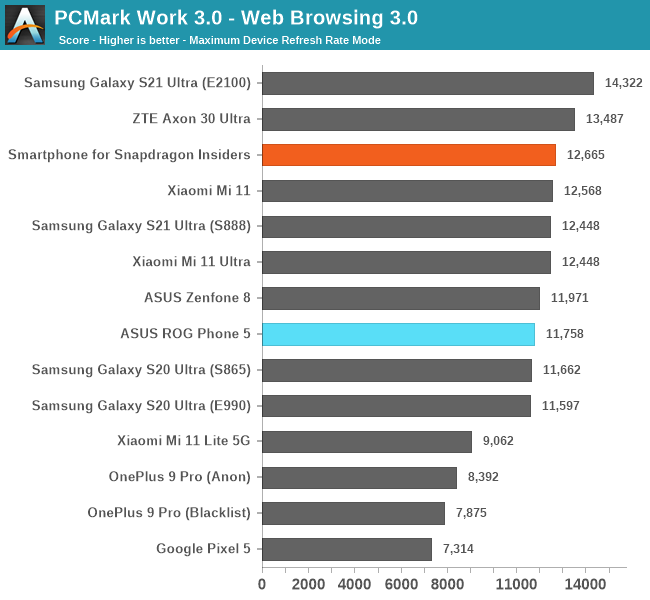
In the web-browsing test in PCMark Work 3.0, the SSI is a little bit faster than the ROG 5.
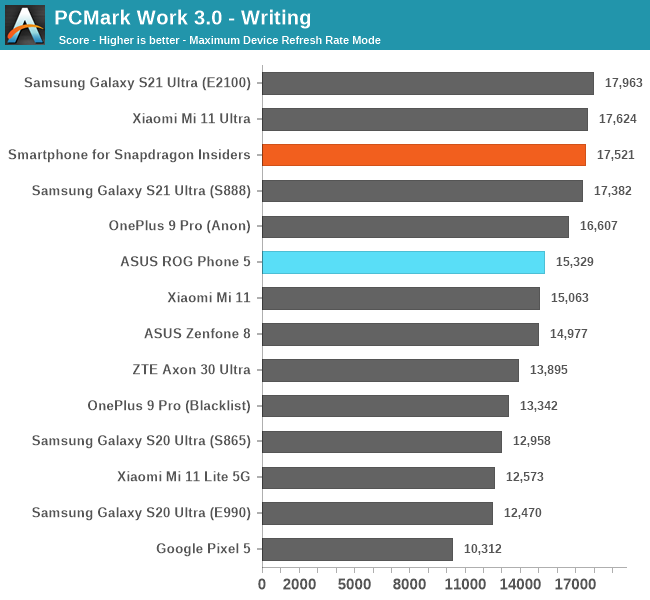
The writing subtest shows a more substantial advantage in favour of the SSI, indicating that there’s actually some more notable BSP and scheduler/DVFS differences between it and the ROG 5. It’s in line with the performance of the Mi 11 Ultra and the Galaxy S21.
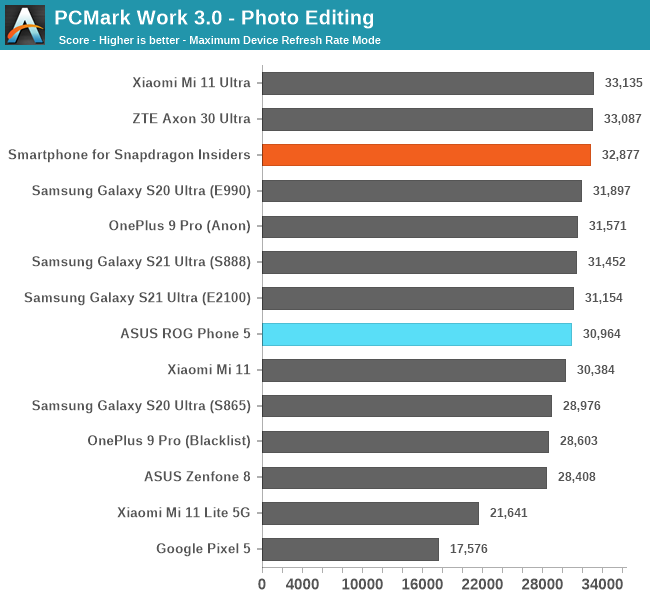
Photo editing falls in line with the Mi 11 Ultra and the Axon 30 Ultra.

Oddly enough, both the ROG 5 and the SSI top the charts in the data manipulation test, showcasing similar OS optimisations.
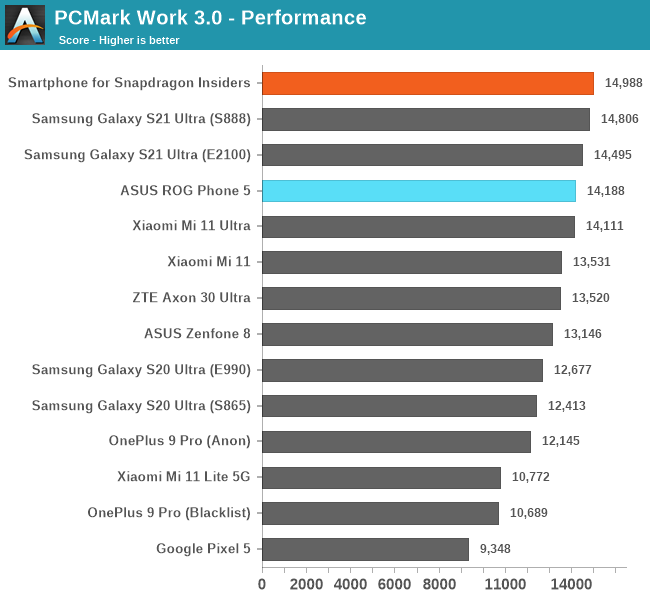
In the overall performance scores, the SSI ends up as the top performing Android device, thanks to its more aggressive tuning.
Web Browser Performance
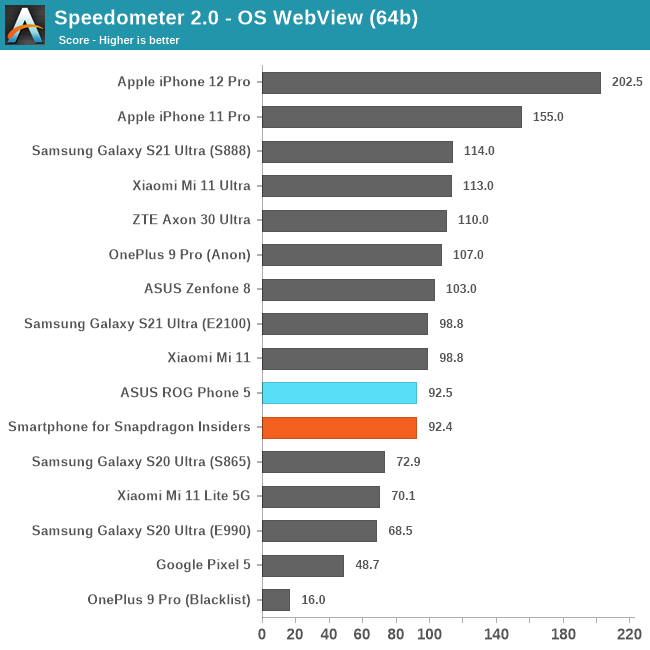
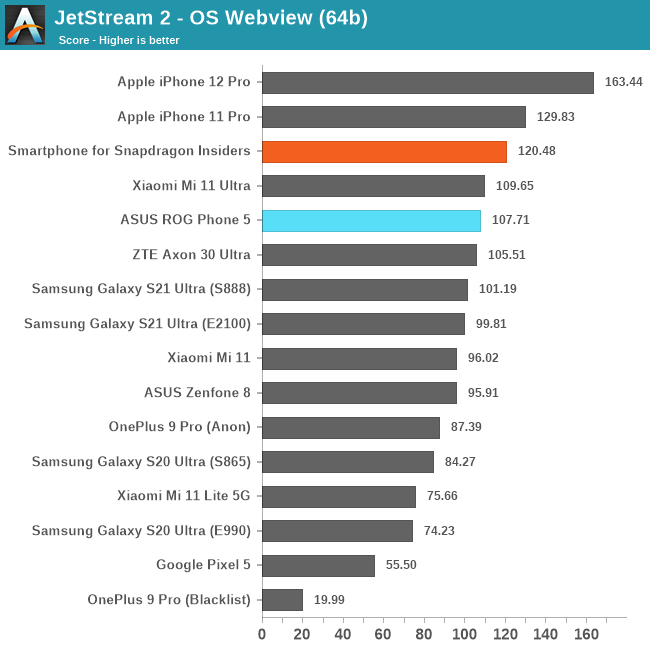
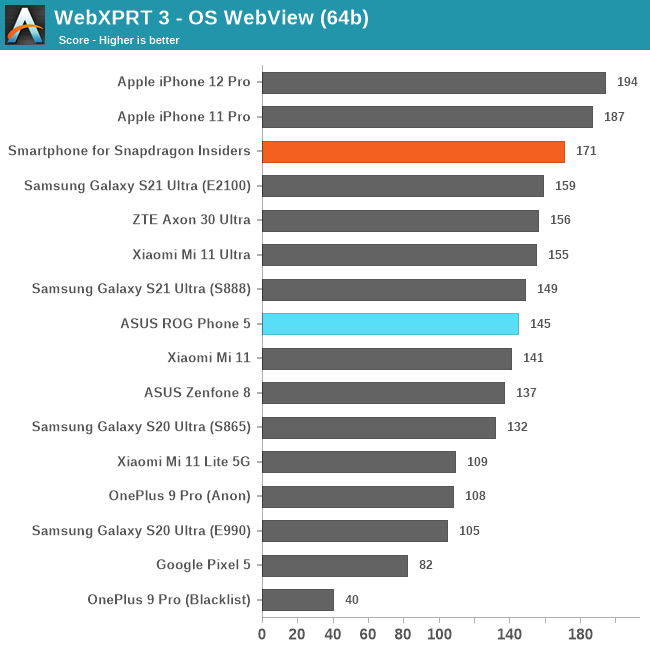
The web browser results are a bit of a mix between being in line with the ROG Phone 5 and being actually quite ahead of all other Snapdragon 888 phones on the market. Particularly the extremely high WebXPRT 3 scores showcases that the SSI is a lot more aggressive in terms of DVFS than any other Snapdragon powered device.
The overall system performance of the Smartphone for Snapdragon Insiders is excellent and outstanding The extremely fast responsiveness of the software as well as for the fast chip, along with the very high refresh rate as well as the low latency input means that it’s amongst one of the fastest and snappiest devices on the market.










43 Comments
View All Comments
shabby - Monday, August 16, 2021 - link
Lol at the battery life, utter junkGreat_Scott - Monday, August 16, 2021 - link
It's a worse phone for more money. Which is surprisingly common.tom-fox-29 - Thursday, September 9, 2021 - link
Rightjamesb2147 - Monday, August 16, 2021 - link
Savage.This is why I read AnandTech!
Moizy - Monday, August 16, 2021 - link
+1warreo - Tuesday, August 17, 2021 - link
+2. I love Andrei's writing. He is not always right, and he can be overly defensive/confrontational, but I respect that he takes a view and makes the effort to be data driven instead of the "always neutral, don't write anything negative" stuff that is the norm everywhere else. At least he advances the discussion even if you disagree with him.Andrei Frumusanu - Wednesday, August 18, 2021 - link
As you say I write based on data or facts, so I'd like to hear what you say I'm not "right" on.melgross - Monday, August 16, 2021 - link
It’s a wonder how companies can put a device out like this. Did they even try it out?We’ll have to see what the camera software updates bring, but if anyone is actually interested in this, I can only tell them to not buy something on promises of future upgrades. That’s something this site also says. Maybe those updates will result in a seriously improved camera system, but maybe not. I would have preferred at least a preliminary testing suite to see if those updates do what Qualcomm claims. But since that wasn’t done, we won’t know.
BedfordTim - Tuesday, August 17, 2021 - link
I wonder if it was meant to be a low volume subsidised device for them to experiment with, but someone in management failed to understand.DanNeely - Monday, August 16, 2021 - link
Does "3x optical zoom, 80mm eq." mean an 27-80mm equivalent zoom, or 80-240mm equivalent zoom? The former would start the optical zoom at roughly the same point; but you'd be dropping from 64 to 8MP directly. The latter would start at roughly where the main sensor would be with just taking an 8MP area in the center of the sensor for a "zoom by crop" effect; so both interpretations seem plausible.